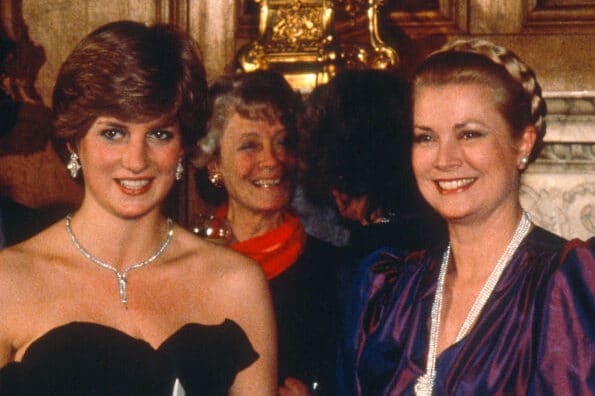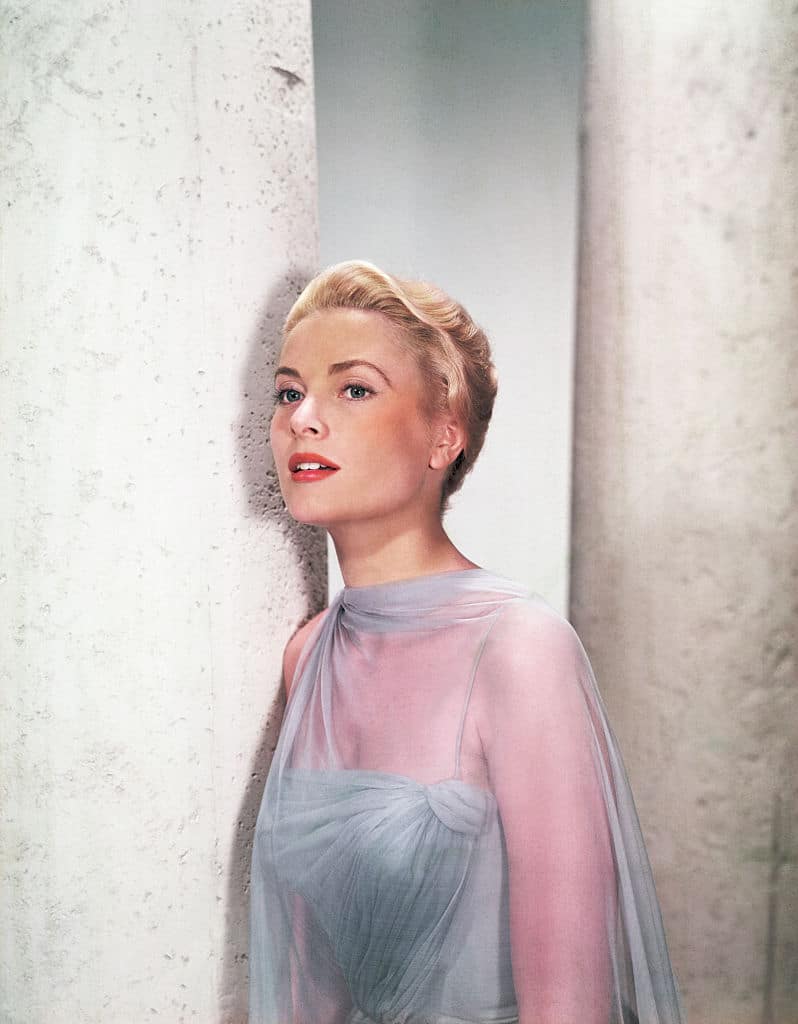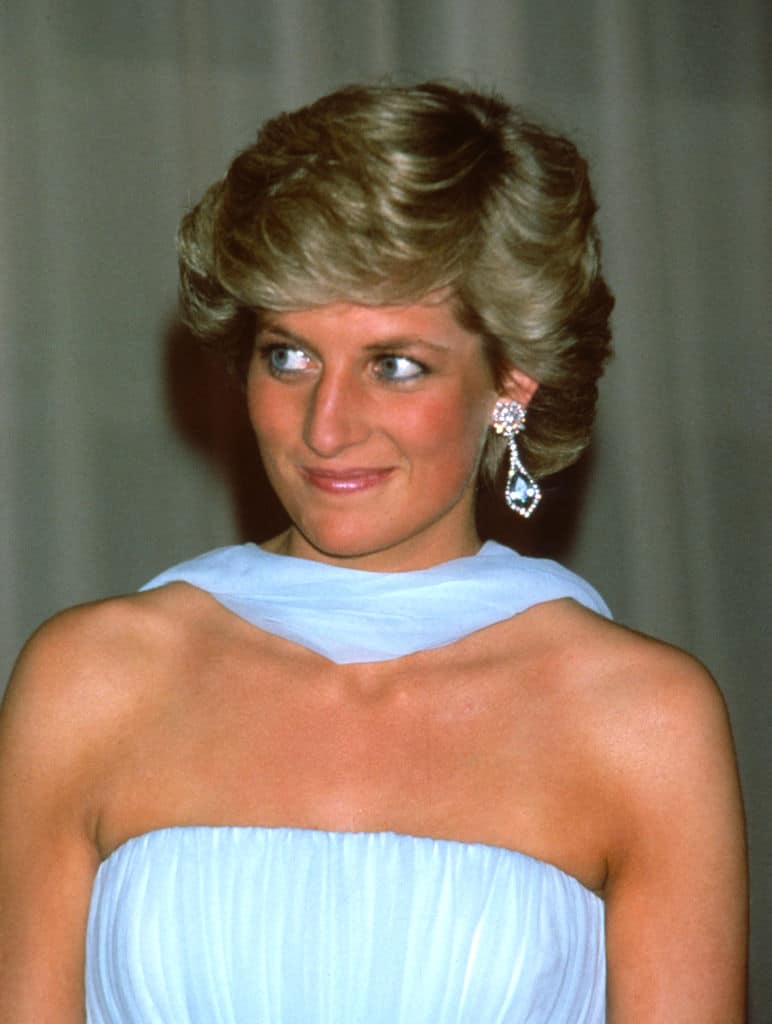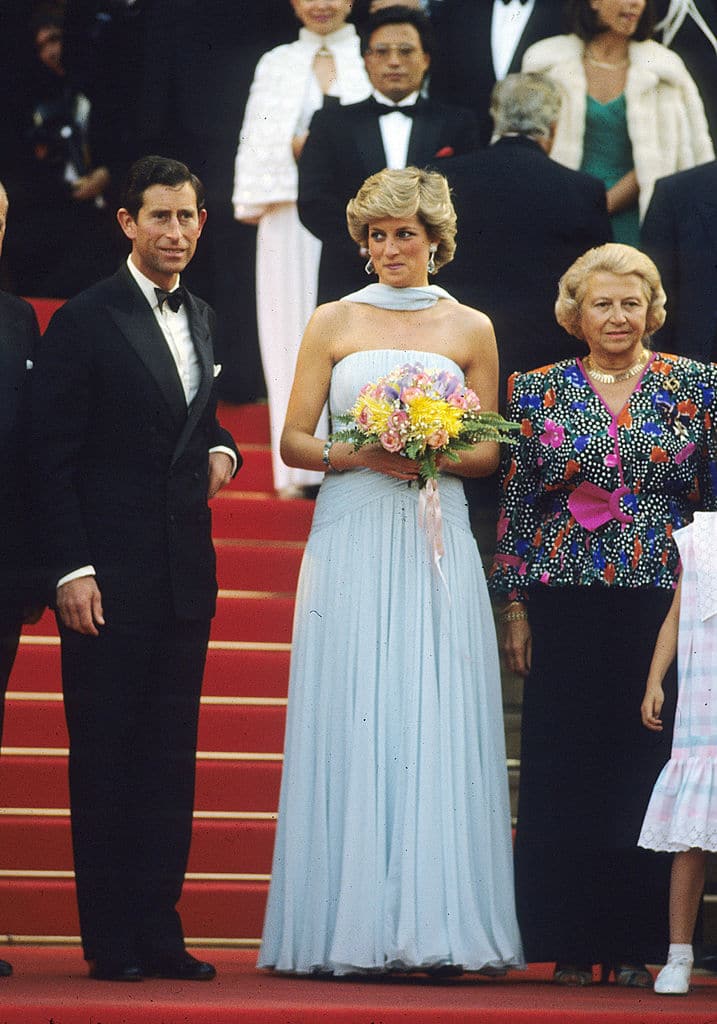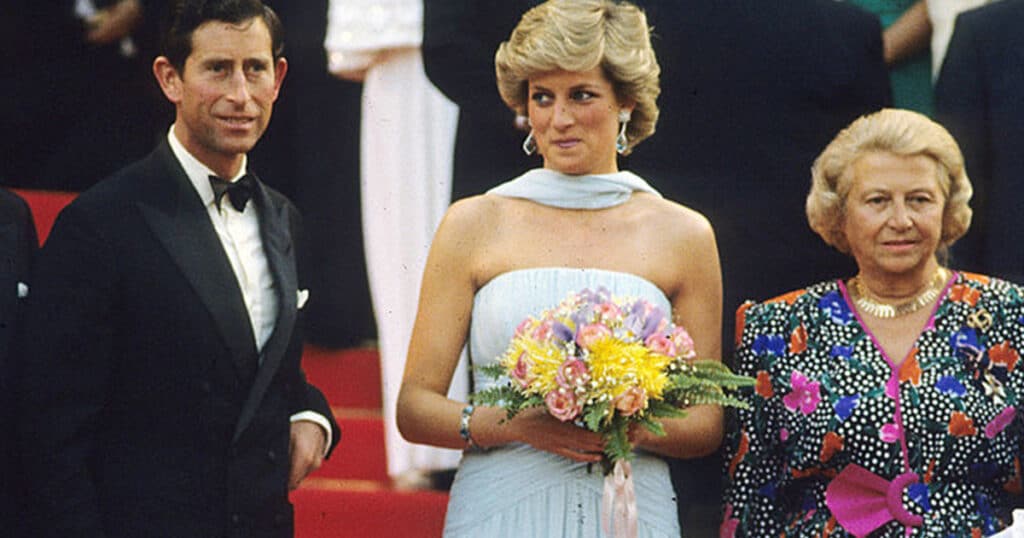When Princess Diana arrived at the 1987 Cannes Film Festival, she seemed to float rather than walk, a vision in pale blue tulle that shimmered in the Mediterranean breeze. Flashbulbs exploded, cameras whirred, and for a moment, the world held its breath, captivated by her grace.
But beneath the glamour, Diana’s gown held a secret—one that spoke not just of fashion, but of remembrance.
She was known as the “People’s Princess,” a royal unlike any who came before. With her preference for softness over stiffness and her talent for silent storytelling through fashion, Diana transformed every public appearance into a message—sometimes subtle, often heartfelt. In the 1980s and ’90s, she became a global style icon, stepping away from rigid formality and toward something more accessible, more human. One of her favorite visual signatures? Pastels. They softened her image, made her feel closer to the people she met, and whispered elegance without shouting wealth.
But that particular night in Cannes? It was different.
She was there with Prince Charles for barely ten hours—officially, to honor Sir Alec Guinness and support British cinema. But all anyone could talk about was her dress: a strapless, powder-blue chiffon gown, designed by Catherine Walker, whose partnership with Diana would later define many of her most iconic looks. This gown, however, carried more than beauty in its seams.
As she entered the screening of The Whales of August, Diana didn’t speak. She didn’t need to. Her dress did the talking.
What most people missed in 1987—but is unmistakable in hindsight—was that Diana’s gown wasn’t just a fashion statement. It was a tribute.
A tribute to another princess who had once walked the same French Riviera shores. A princess whose story, like Diana’s, started in Hollywood, transformed into royalty, and ended far too soon. Grace Kelly—Princess Grace of Monaco—had died five years earlier in a tragic car accident. The same fate that would take Diana’s life just a decade later.
The resemblance was striking. Diana’s flowing dress mirrored the iconic Edith Head gown Grace Kelly wore in Hitchcock’s To Catch a Thief, filmed along the very coast where the Cannes Festival took place. From the color to the chiffon drape catching the wind, the similarities were undeniable. This wasn’t coincidence—it was intention.
Back in 1981, Diana had met Grace at a charity gala just after her engagement to Prince Charles. The young bride-to-be had been overwhelmed by the pressure, bursting into tears in the ladies’ room. It was Grace, older and wiser, who had embraced her, offering quiet comfort and candid advice about what royal life truly meant. That moment—intimate, compassionate—stayed with Diana forever.
And so, when Diana walked the red carpet at Cannes, she did so in a dress that held echoes of that meeting, stitched in fabric and memory. She didn’t make a speech. She didn’t call attention to herself. She simply paid homage—with grace, with silence, with style.
The public saw the photos. They saw the elegance. But they didn’t see the full story. Even at the time, the press didn’t mention the deeper meaning. If you dig through archives from that year, there’s barely a whisper of what Diana might have been saying without words.
But the signs were there. Catherine Walker and Diana were known to draw inspiration from screen legends, and Grace had been one of Diana’s early royal confidantes. The soft blue, the silhouette, the way the scarf moved in the breeze—every detail was carefully chosen, a nod to Grace’s iconic on-screen presence and off-screen legacy.
Diana wore the same gown again in 1989 to the premiere of Miss Saigon. And in 1997, just months before her own death, she included it in her famous Christie’s charity auction, selling off 79 dresses to raise money for causes close to her heart. The Cannes gown sold for over $70,000, and later resold in 2013 for $132,000, with proceeds going to children’s charities. In 2017, it returned to public view, showcased at Kensington Palace as part of a 20th-anniversary tribute.
Today, it stands as more than a beautiful dress. It’s a symbol of a woman who understood how to speak without words. A woman who mourned quietly, honored deeply, and used fashion to express what royal protocol often forbade her to say aloud.
That night, the cameras caught the shimmer of tulle, the shine of diamonds, the smile. But they missed the message—a soft blue thread connecting two women, two lives shaped by duty and tragedy, and a bond only they could truly understand.
